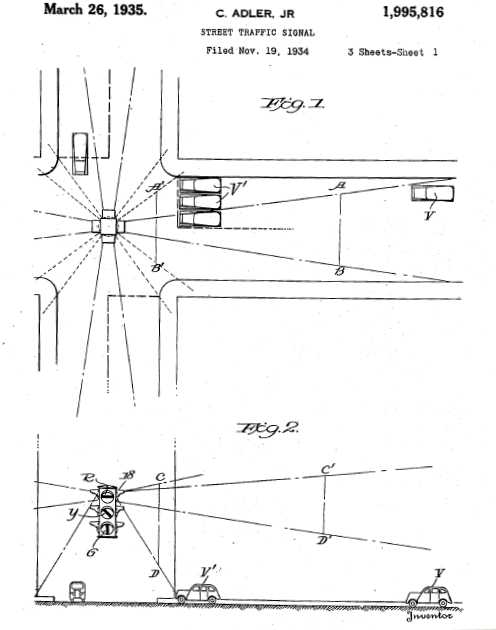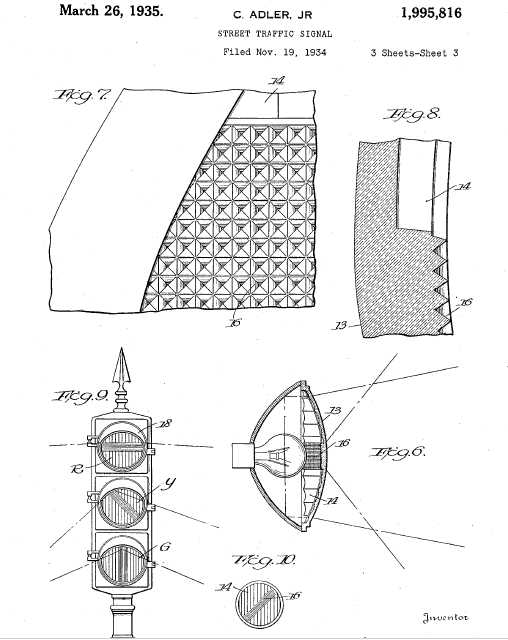|
Charles Adler, Jr. invented traffic control devices as early as 1928, designing such things as lenses that were improved for that time, fail safe illumination, reliable control mechanisms and even an early traffic actuated signal that changed when a driver at a red light honked a horn. Perhaps his best known invention was his "bar" lens, designed in 1934 to assist color blind drivers.
At that time some signals had red lenses on top and green on bottom while others had green on top and red on bottom. It could be confusing to color blind motorists. Additionally there were many immigrants just learning English as well as many areas in the country where many drivers weren't literate, so lettered or "command" lenses were not always understood.
Adler came up with the notion of placing a diffused bar in each of his lenses that could be understood even by the color blind and those who couldn't read. Red lenses displayed a horizontal bar. Yellow lenses displayed a diagonal bar and green lenses displayed a vertical bar.
The weakness of the Adler design was that the lenses were prone to "phantoms" when early morning or late afternoon sunlight entered the lens and reflected back making the lens appear to be lit. Eventually most signals were equipped with beaded lenses that had less of a phantom problem although occasionally a savvy traffic signal fan will find a signal still in service that has one or more Adler bar lenses.
Note: These lenses are bright and it's hard to get the camera to show the bars very clearly. When viewed from any distance with the naked eye, these bars are quite distinguishable.
| 


